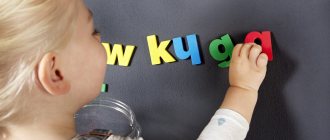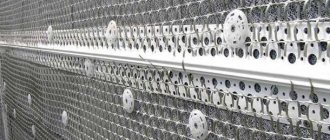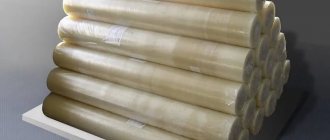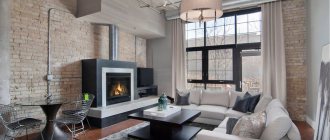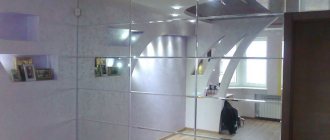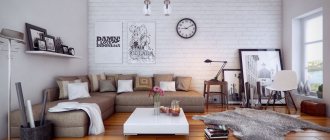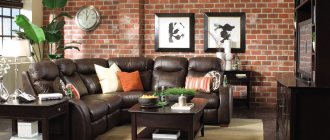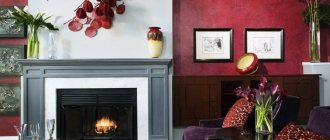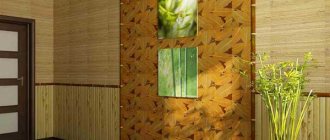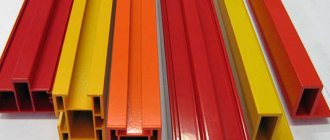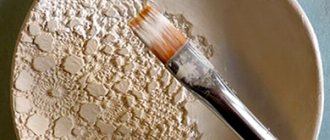When planning to make repairs, a person thinks about how to decorate the walls so that they last as long as possible. This question is especially relevant if there are children.
And no matter what age they are, little ones love to draw on the walls. Teenagers stick various posters of idols or other posters to them.
Fortunately for many, a special magnetic paint for walls . It can be used in any room, even in the kitchen.
Such an innovation will be a pleasant surprise not only for household members, but also for guests, to whom you can demonstrate the miracle of holding various magnets or drawings on the wall.
Every year magnetic paint becomes more and more popular in the market. All thanks to versatility and quality, guaranteeing a long service life .
It doesn’t matter for what purpose you need such a covering, to place information in the kitchen using magnets or to draw educational tasks or pictures for a child with chalk.
What is unique about magnetic paint? What is its composition? What is magnetic coating used for? Is it possible to make magnetic paint yourself? And some instructions on how to properly prepare the surface and apply magnetic paint to the wall.
[contents]
Features of magnetic paint
The magnetic paint contains a latex or acrylic component, which ensures ideal adhesion of the decorative coating to any material. Magnetic paint is applied to drywall, wood or concrete. The main thing is to properly prepare the base before applying.
Read also: How to make jibs in a frame house
Magnetic paint is absolutely non-toxic, which allows it to be applied to walls in children's rooms.
Applying magnetic paint
Painting walls with magnetic paint
Surface preparation
Preparation for application is the same as before painting with latex paint. The wall surface must be clean from dirt and grease, traces of treatment with water-soluble materials - wallpaper glue, adhesive primer. If traces of paint remain on the wall, it must be cleaned and the lime paint must be washed off with water. If necessary, remove cracks and other irregularities using putty. After the surface has dried, it needs to be sanded, wiped with a damp cloth and allowed to dry well. The paint adheres best to smooth surfaces; it is not recommended to use rough concrete walls. Glossy surfaces must be sanded until matte. Before painting, the surface must be dry, pre-treated with a latex-based deep penetration primer.
The temperature during painting work should be above 16°C; some manufacturers reduce this figure to +5°C ambient air and the temperature of the paint itself +10°C with a humidity of no more than 80%.
Painting with magnetic paint
Before using the paint, taking into account that sediment may appear during storage, it should be thoroughly mixed until the color and consistency are uniform. It is recommended to stir the paint from time to time during painting work. The boundaries of the surface to be painted are marked using masking adhesive tape to obtain straight lines and protect nearby interior parts. The masking tape is removed an hour after the work is completed. Painting can be done either with a short-haired paint roller or with a flat brush.
To obtain a high-quality coating with good magnetic properties, manufacturers recommend applying paint in three layers, with the final consumption being 0.5-0.7 liters per square meter (numbers may vary for each brand). When using Magpaint magnetic paint, the interval between applying the first two layers is 4 hours. At least 24 hours must pass before applying the final layer. Magnetic from Tikkuril requires a gap of 24 hours before each application.
If you plan to apply slate or other topcoat paint to magnetic paint, you need to ensure that the coating with magnetic properties is perfectly smooth. This is achieved by leveling each applied layer with a spatula, covering an area of a square meter, before the magnetic paint dries. The spatula should be cleaned after each stroke.
Read also: What to do to make a guy forgive?!
When painting, pay attention to safety regulations. Wear protective clothing, safety glasses and gloves. Use respirators in poorly ventilated areas. It is forbidden to rub your eyes with hands that have traces of paint on them, so that metal dust does not harm the cornea of the eye. Upon completion of work, thoroughly rinse the painting tool with water; do not leave traces of paint in the sink, as iron chips can damage its surface.
It must be remembered that the final properties of hardness and wear resistance of magnetic paint will be formed only after a month, so the surface must be cleaned with a dry brush or rag.
Video description
This video shows the features of preparing a wooden surface for applying primer:
The quality of work depends not only on the selected soil, but also on how carefully the preparatory stage is carried out:
- cleaning from debris and dust;
- masking defects;
- surface grinding.
Preparatory work differs according to the type of base that is to be primed.
Surface treatment of new products
When choosing a primer for wooden surfaces, consider the following points:
- Operating conditions: for processing products used outdoors or in rooms with high humidity, soils with increased hydrophobic properties are used.
- If it is necessary to preserve the decorative properties of wood and to emphasize the natural pattern, transparent primers are chosen.
- Wood species have different densities, which determine their resistance to wear and damage, so in some cases it may be necessary to strengthen the outer layer. The best choice in this situation would be a wood primer with primer properties.
The manufacturer does not forget to indicate the features of its products on the labelSource prom.st
Primer for old paint
Treating a wooden surface with a primer is necessary not only in the case of a freshly manufactured product, but also on old surfaces on which the paintwork needs to be renewed.
The main task when preparing a surface for priming over old paint is to completely remove the old coating. The opinion that if the type of old paint matches the one that will be applied, then complete stripping is not necessary, in most cases it turns out to be untenable.
For high-quality application of primer, it is important that the old paint is removed from the surface as much as possible. Source kraski-net.ru
The presence of old coatings, even after applying a high-quality primer, reduces the wear resistance of the new layer of paintwork. Therefore, to ensure the quality and durability of the surface treatment, old paint or varnish should be cleaned as much as possible.
Even with intensive abrasive treatment, there is still a possibility that the color of the previous coating will remain on the wood. In such cases, a separating layer of opaque primer with a composition similar to the planned coating is applied.
Primer for wood for painting is a mandatory stage of surface treatment, ensuring long-term operation of wooden products without loss of aesthetic characteristics.
High-quality primed wood can be painted without problems Source sdelai-lestnicu.ru
slate wall
The graphite wall is a fairly well-known solution. This is a special paint (commonly called chalkboard paint), green or black, of which only black is usually used. Allows you to make a large chalkboard out of a wall.
For study
Remember always white and dry hands from chalk, a constantly heavy rag that you have to run around and wash, as well as creaking and non-writing chalk? Multi-colored crayons were generally very rare. Believe me, almost nothing has changed in schools and institutes now.
So let your children, schoolchildren and students study in the 21st century:
- Apply marker paint to the walls or an old chalkboard and forget about chalk!
- Transform any surface into a modern finish. Discover new ways to learn.
- Create a dynamic environment where schoolchildren or students can explore their ideas and talents.
The chalk school board is now out of date, because there is marker paint, with which you can turn an ordinary wall into an unlimited space for writing and drawing with a marker.
The coating is well suited for any educational institutions: kindergartens, schools, universities, etc.
Positive traits
Primers with magnetic properties have a number of advantages:
- these building materials are completely free of unpleasant odors,
- are not poisonous, therefore they can be used in medical and educational institutions,
- comply with fire safety standards,
- belong to environmentally friendly building materials, do not have a harmful effect on the health of people and animals,
- have increased adhesion to any surfaces,
Such soils have special properties. Paints can dampen electromagnetic radiation from household appliances:
- TVs,
- microwave ovens,
- computers.
Criteria for choosing magnetic paint
Before you go to the store, you should carefully study the main criteria for choosing magnetic paint:
- Color. Mostly magnetic primer is black (it is very difficult to cover it with any other shade). Therefore, if the plan is to cover a magnetic wall with a layer of colored paint, then it is better to cover the surface with a gray magnetic primer.
- Drying speed. When choosing paint, it is necessary to take into account that magnetic primer is applied in several layers, and the longer each layer dries, the more time it will take to paint.
- The paint consumption is indicated by the manufacturer on the can . Before purchasing, you must carefully study the instructions so that there is no problem of shortage or excess of material.
Picture 082
What does it consist of?
The main component that helps distinguish magnetic paint from others is metal particles , so small that they can be compared to dust.
Therefore, the soil-magnetic coating is evenly distributed over any smooth wall surface.
Depending on the manufacturer, various components are added :
- Thickener or binder;
- Additional additives.
Magnetic wall covering is excellent because it has no toxic properties . The paint is diluted with plain water and is absolutely safe even for children. Not to mention a number of additional benefits:
- You can cover not only the wall of the room with magnetic soil, but also the door. Any surface can become magnetic if properly prepared.
- Place whatever you want on the magnetic wall, from notes to paintings of your own.
- Such a wall is an excellent alternative to expensive boards ; moreover, for any board it is necessary to specially prepare a place.
- This opens up the opportunity not only to decorate the room beautifully, but also to post useful information.
Types of slate paint
Chalkboard paint is sold in sprays and in regular cans for application with a brush. The first option allows you to use material more economically, but if you need to paint small surfaces or hard-to-reach places, it is better to use a standard paint format and a brush.
On sale you can find ready-made slate paint in different shades . Also on store shelves there are compositions that can be tinted in any shade , which means that the slate surface can be not only black and green, but also any desired shade and fully meet the design idea.
Continue painting: applying the third layer of magnetic paint
The work was continued the next day, in the morning, when the wall was thoroughly dry. The third layer is also applied without saving paint. After applying it there should be no gaps left on the wall. Initially, I decided that I would not make the entire wall magnetic, but would cover the entire surface with graphite paint. This was my mistake. After the finishing coat, the border of the magnetic paint became visible. Therefore, it is better to cover the entire surface with it. At the same time, a combination in which part of the wall, completely covered with metallic paint, is painted to look like a slate board, and around it a frame of any bright color is made, would look good. I didn't consider this option.
Mix the last can of magnetic paint using a mixer
Apply the final third layer of metallized coating
Evaluation of the final result after complete drying
After the finishing layer was applied, I let the paint dry, and on the third day of work it was already possible to evaluate what the result was. If you look from the side, the wall looks good. Taking into account that in addition to various magnets there will be inscriptions and chalk drawings on it, we can say that I was satisfied with the result.
A finished wall on which you can draw with crayons or attach various paper notes to magnets
It remains to dwell on the mistake I made. Of course, if I have to do similar work somewhere else, I will take it into account. For readers planning such a wall covering for a nursery, I think it would be useful to see the result of my shortcomings in order to prevent this from happening themselves. If you look closely, you can see a stripe along the border of the metallized paint layer. Of course, I later got rid of this trouble, but this led to additional financial costs for the purchase of two more cans of graphite paint. The wall was covered with two more layers, after which the border became invisible. Fortunately, the metallized layer was made with high quality and the additional painting did not affect the strength of fixation of the magnets on the wall.
The border of the metallized layer is clearly visible, which clearly does not improve the appearance
Purpose of the material
The fashion for removable decorative elements, pictures and photographs on the walls, dictated the need for a material capable of holding all these interesting details on the surface of the walls, giving the interior a lively and lived-in look.
There is no magic here. Paints that are applied to the area of walls allocated for decoration with illustrative materials and children's drawings contain iron particles. This building material is often also called magnetic soil. This composition is used to coat surfaces:
- concrete,
- plywood sheets,
- wooden surface of boards,
- painting of fibreboard, chipboard, gypsum fiberboard, gypsum board.
After applying iron-containing primer, the surface treated with it acquires magnetic properties. Thanks to this, magnets are attracted to the plane of the walls and easily held on it.
This paint can be used to create magnetic sections of walls:
- in cafes and at personal workplaces in offices and offices of various organizations;
- kindergartens and schools (for covering boards intended for demonstrating visual educational material);
- at home (in kitchens, children's rooms).
A primer that has magnetic properties can be pasted over with wallpaper, but its ability to attract magnets will not be lost. Such compositions are used as a basis for covering a marker board.
Tips for diluting and using PVA primer
After applying the first layer, there is no need to rush to complete the second
To begin with, it is important to make sure that the coating is completely dry and does not peel off, otherwise the result of the work will not be satisfactory. It is better to apply PVA primer on monolithic concrete, but on cement it gives less pronounced strengthening properties and may be subject to cracking
When diluting the soil, do not be afraid to add more water. Some adhesives are sold in a thickened form, and after the first layer is completed, the polyvinyl acetate film begins to separate. Therefore, the 2:1 proportion with water is not always correct, and sometimes it is necessary to introduce water in a larger volume.
How to make it yourself?
The cost of finished magnetic paint for walls is quite high, starting from 1000 rubles and above, due to the composition. Not everyone can afford such luxury.
Why luxury? It’s just too much consumption of one liter jar, enough for only 2 m2. Therefore, the relevant question is, how can you save money?
There is an economical way to make your own paint. acrylic paint , the color is at your discretion.
Then add a cement-based building mixture to it. The proportions are as follows: for a glass of paint - 2 tablespoons of cement mixture.
This way you will get chalkboard-effect chalkboard paint. True, it does not have magnetic properties. To teach them as well, you need to add metal shavings to the paint . Try to make it as small as possible.
The most budget option can be considered this:
- Take a self-prepared varnish containing a solution of polystyrene foam in acetone.
- Add metal filings here and apply to the surface in several layers.
- Then cover it with regular varnish and paint it in the color you need with enamel.
Another way is to mix metal filings with a rust converter. Then add the mixture to rubber floor paint. You probably have a logical question: why is it necessary to resort to such manipulations?
The answer is simple, any iron rusts when in contact with water or air, so it is imperative to protect the sawdust , for example, using varnish or special processing solutions.
Advantages and disadvantages
Slate paint and varnish material, which is often called graphite, has a number of significant advantages and disadvantages.
Positive properties:
- the coating is not afraid of fire, resistant to scratches and chips;
- can be used to restore various household items - from cabinets, refrigerators to flower pots, glassware;
- does not contain harmful, toxic substances;
- practically odorless, which is very convenient when decorating a nursery, kitchen, cafeteria, restaurant;
- on a surface treated with this material you can draw with colored chalk;
- everything that is written and drawn on the graphite wall can be easily erased with a regular damp cloth;
- Great for rooms frequented by children who have a habit of drawing on the walls;
- can be applied without problems to most known materials, can be easily updated if necessary, and adjusted using sprays matched to the tone;
- if the material is planned to be used in a children's bedroom, this will help free up a significant part of the space in which a huge board on an iron stand could stand.
The negative sides are:
- the paint, with the exception of some varieties, is not suitable for outdoor use in cold regions - the coating quickly loses its appearance due to temperature changes;
- unheated summer cottages, bathhouses, and open verandas are also rarely painted with slate compounds;
- if the wall is not periodically cleaned of chalk, it looks sloppy;
- the functional coating has no decorative value;
- the material is produced mainly in dark colors, which is not suitable for every interior, making the room gloomy if used excessively;
- a monochromatic coating can quickly get boring;
- regular chalk crumbles a lot, so it is recommended to use special dust-free pastel crayons;
- if the plane is overly textured, the “blackboard effect” will not work on it - careful leveling followed by sanding is required;
- chalk dust is harmful to people prone to allergies.
How to apply magnetic graphite coating to walls in a nursery: the experience of a Homius reader
Using walls to aid learning has become quite popular these days. Some cover surfaces with children's magnetic paint, on which various elements can be fixed, others make a slate board out of the wall so that they can draw on it with crayons. Today’s article, sent to us by Oleg Vyacheslavovich Kopytov from the city of Vyborg, Leningrad Region, will talk about how to combine these two options and apply magnetic graphite coating to walls in a nursery.
Summing up the work done
To date, the painted wall has fully met expectations. The only thing to consider is the choice of flooring. You should not lay carpet along the wall, the pile of which will collect chalk dust. There will be quite a lot of it if the child likes to draw. The easiest way to remove it is from linoleum or laminate, the chamfer on the panels of which has not been removed. As for practicality, such a wall in the room is almost irreplaceable for a child. At the same time, such a coating allows you to periodically change the interior by placing various posters or any educational information on the wall.
I hope that the readers of the online magazine Homius, having carefully studied the step-by-step description of the work I completed, will take something into their arsenal, and when painting the walls this way, they will take into account the mistakes I made. And, in the end, I have one request - in the comments below, express your opinion on this article. It’s very interesting what you think about such a covering for the walls of a nursery, and how I did it. I'll be watching the comments closely.
The Homius editors invite home craftsmen and craftsmen to become co-authors of the “Stories” section. Useful first-person stories will be published on the pages of our online magazine.
Source
Slate-magnetic wall in the children's room
Many parents are faced with the problem of painting and painting walls by children. Modern coatings make it possible to clean walls from occasionally appearing children's drawings. In the case of traditional acrylic and latex paints, over time the coating loses its resistance to wet cleaning and wet cleaning. Even high-quality latex paints are not as resistant to cleaning as chalkboard paints. This design of the wall above the bed is a very interesting solution for children’s and adult bedrooms.
Decorating a children's wall with magnetic slate coating, photo
The main advantage of using this coating in a nursery is the ability to create almost any interior design. The color of the coating is chosen depending on the purpose of the room:
- in the living room and kitchen, black is often used,
- In children's rooms, you should consider painting the walls with light, bright colors.
It is not recommended to use any pastel colors - it is difficult to choose the right chalk colors for them. The following colors are often chosen:
- light shades of green,
- blue,
- light grey.
Magnetic paints with a slate effect are often used in children's and youth rooms, where a teenager can freely hang decorative posters and photographs without damaging the walls.
General information
A slate surface with magnetic properties is created by sequentially applying two components:
- Magnetic paint MagnetPaint. Makes any surface magnetic. Thick and contains metal particles that have magnetic properties. This is why Magnet Paint is dark grey.
- BlackBoardPaint chalkboard paint. Allows you to write with chalk on any surface. There are two types - black and base, which can be tinted to any other color at your request. Using slate paint, you can create a menu board, a permanent label on a jar, a drawing board - the choice of shape and color is unlimited. Choose the shade you need and start implementing your idea!
What is magnetic, slate and magnetic marker paint?
The slate coating allows you to create a matte surface on the wall that is resistant to washing and cleaning with a dry or wet cloth. There are 3 classes of coating strength:
- A quality product is characterized by first class strength.
- The second and third classes are not resistant to cleaning with a damp cloth or sponge.
Slate paint on which you can write with chalk - white, other colors available in different colors. The most commonly used slate compounds are available in black, but other colors can be found, including light shades suitable for writing with a dark, bright marker.
The purpose of magnetic paint is slightly different. It includes small particles of iron, and as a result the coating attracts a magnet. With magnetic ink, 2-3 layers are usually required. The coating increases the ability to attract a magnet as the layer thickness increases.
Slate and magnetic compositions are used for painting walls:
- kitchens,
- corridor,
- children's rooms.
They can be painted:
- wooden furniture elements,
- doors,
- equipment, for example, a refrigerator door, a dishwasher (it is worth sanding it with fine sandpaper first).
Magnetic paint can be used as a base for slate paint. Magnetic marker paint allows you to create a surface that attracts a magnet and allows you to draw on the wall with chalk. It is important to follow the order of application of various compositions - you should always apply the magnetic composition first, then the slate one. Magnetic paint should not be used as a substitute for primer; for long-lasting coverage, it should be used in any case.
Use in the kitchen
Marker-magnetic coatings are ideal for the kitchen, effective in areas exposed to splashing water, for example, on the wall between the countertop and hanging cabinets - on the kitchen backsplash. Black color gives an interesting space for maneuver, serves as an excellent background for various decorations, and creating interesting designs with your own hands.
The slate coating allows you to freely change the design of the kitchen, thanks to drawings, inscriptions made by hand or using stencils and templates. If used in the kitchen, an interesting solution is to cover a fragment of the wall or refrigerator door with drawings. On the resulting surface you can make notes:
You need to carefully apply paint next to ceramic tiles, induction, and gas stoves. Coatings are resistant to abrasion and moisture, but not always resistant to oil and fat splashing. Some coatings become discolored when exposed to hot fat.
Magnetic coating allows you to create interesting arrangements from:
The greatest potential is realized with a combination of magnetic and slate paint. In this case, you need to purchase 2 identical colors as much as possible. First, magnetic paint is applied, then slate paint.
If you plan to use only black, you can ignore minor color differences. The problem occurs when light colors are used. In this situation, the magnetic base should be lighter than the slate coating so as not to significantly affect the final color of the surface.
Magnetic paint in interior design: smart magnetic walls
Magnetic paint in interior design is a great inspiration for creating creative spaces. Magnetic paints allow you to attach jewelry to magnetically painted surfaces. Painting walls with magic paint: a guide.
By painting walls with magnetic paint on surfaces treated with it, you can “stick” photos, posters, without using pins, glue or tape.
What is magnetic paint? properties
Magnetic paints are dark gray dispersion primers. The surface treated with them is matte. The most popular are acrylic or latex magnetic paints, with alkyd paints also available. They contain the addition of very fine iron particles (iron magnetite). A surface painted with magnetic paint accumulates iron particles, attracting a magnet. They do not contain lead, solvents or other harmful volatile substances. You can apply any color of paint to a surface painted with magnetic paint.
How to paint with magnetic paint
Magnetic paint can be applied with a brush or roller using a sponge. Do not use the spray method. Painting should be carried out at temperatures above 5, sometimes 10ºC. Stir well before using magnetic paint. They must not be diluted or mixed with other paints!
- Painting a wall with magnetic paint
To make a wall covering attract a magnet, apply at least two layers of magnetic paint, maximum four - the more, the more effective the attraction will be. Magnetic paint has a dense consistency, so its uniform distribution is quite difficult.
- Magnetic paint - drying time
Depending on the brand, magnetic paint dries from two to six hours. However, the total drying time is about 12 hours. Only after this time can a new layer or top coat be applied.
- What to paint with magnetic paint
Magnetic paint can be painted over most available dispersion paints, water-based varnishes and synthetic resin varnishes in any color or covered with thin wallpaper (in this case a minimum of three layers of paint is recommended). Magnetic paint completely cures after a few days. A liter of magnetic paint is enough to cover about 5 m2 of surface (one layer). The effectiveness of the paint depends on the thickness of the layers applied, as well as the size and strength of the magnets.
